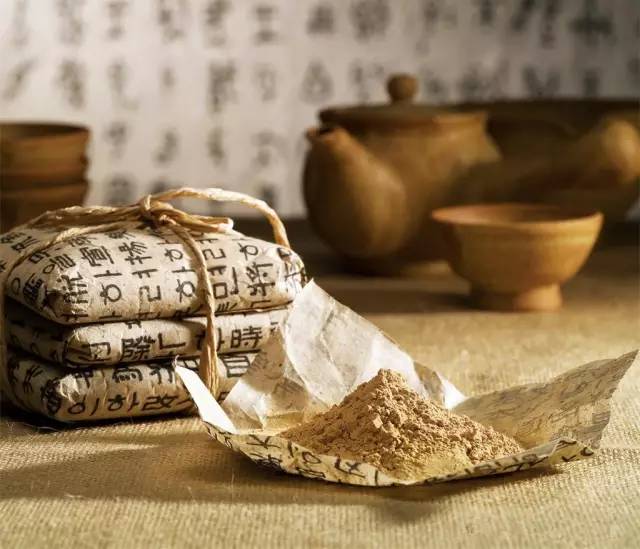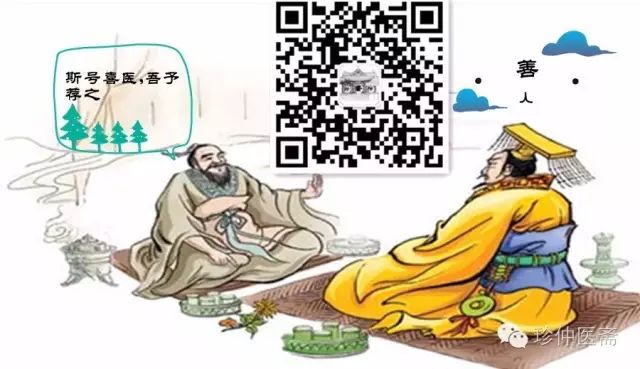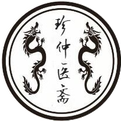


Introduction:
In the “Golden Chamber” (Jin Kui Yao Lue), Zhang Zhongjing elaborates on the principles and treatments for rheumatism, including conditions such as spasmodic dampness, wind stroke, and blood obstruction due to deficiency. This article summarizes the differential diagnosis and treatment of rheumatism as discussed in the “Golden Chamber”: releasing the exterior and dispelling dampness with Ma Huang Jia Zhu Tang (Ephedra and Atractylodes Decoction); tonifying Qi and warming the meridians, harmonizing the Ying and unblocking obstruction with Huang Qi Gui Zhi Wu Wu Tang (Astragalus and Cinnamon Five Ingredients Decoction); unblocking Yang and dispelling wind-dampness, harmonizing the Ying and alleviating pain with Gui Zhi Shao Yao Zhi Mu Tang (Cinnamon and Peony with Anemarrhena Decoction); warming Yang, dispersing cold, and dispelling dampness with Wu Tou Tang (Aconite Decoction); and nourishing Yin and warming Yang with Shen Qi Wan (Kidney Qi Pill).
Broadly, rheumatism falls under the category of “Bi Zheng” (obstruction syndrome) in TCM, which includes various conditions such as rheumatoid arthritis, ankylosing spondylitis, and osteoarthritis, some of which remain difficult to treat clinically. Zhang Zhongjing discusses the principles and treatments for rheumatism in detail in the “Golden Chamber”. This article summarizes the differential diagnosis and treatment of rheumatism as follows:
1Releasing the exterior and dispelling dampness—Ma Huang Jia Zhu Tang
In the early stages of rheumatism, patients often experience invasion by wind, cold, and dampness, with cold and dampness obstructing Yang Qi, leading to stagnation and pain. Clinically, this is often seen as generalized joint pain, aversion to wind and cold, absence of sweating, abdominal distension, poor appetite, or loose stools, with a floating and tight pulse.
This pattern is similar to that described in the section on spasmodic dampness in the “Golden Chamber”. The treatment involves inducing sweating to disperse cold and releasing the exterior to dispel cold. In the formula, Bai Zhu (Atractylodes) dispels dampness, while Ma Huang (Ephedra) induces sweating without causing excessive sweating, and Zhu (Atractylodes) works with Ma Huang to address both exterior and interior dampness. This formula is suitable for early-stage rheumatism with wind-cold on the exterior. If wind is predominant, Qiang Huo (Notopterygium) and Fang Feng (Siler) can be added; if dampness is predominant, Fang Ji (Stephania) and Fu Ling (Poria) can be added; if cold is predominant, Chuan Wu (Aconite) and Liu Ji Nu (Corydalis) can be added.
2Tonifying Qi, warming the meridians, harmonizing the Ying, and unblocking obstruction—Huang Qi Gui Zhi Wu Wu Tang
In rheumatism, cervical spondylosis and lumbar spondylosis often present with numbness and pain in the limbs, which can be triggered or worsened by cold. Patients may experience weakness in the limbs, or generalized pain, with a pale and swollen tongue and a weak pulse. The pathogenesis is often due to deficiency of both Qi and blood, Qi deficiency leading to blood stasis, and insufficient nourishment to the skin and muscles, resulting in numbness. The symptoms and pathogenesis are similar to those of blood obstruction, where “blood obstruction is characterized by both Yin and Yang being weak, with a weak pulse at the cun position, and external symptoms of numbness in the body, resembling wind obstruction; Huang Qi Gui Zhi Wu Wu Tang is indicated for this.” In this formula, Huang Qi (Astragalus) tonifies the defensive Qi and promotes circulation; Gui Zhi (Cinnamon) warms the meridians and unblocks Yang, assisting Huang Qi to reach the exterior and warm the blood vessels; Shao Yao (Peony) promotes blood circulation and nourishes Yin blood; Sheng Jiang (Ginger) and Da Zao (Jujube) dispel wind and cold, nourish the Ying blood, and harmonize the Ying and Wei. Although this formula does not heavily utilize blood-activating herbs, it is based on the pathogenesis of Qi deficiency leading to blood circulation issues, thus using Qi tonification to promote blood flow. If wind is predominant, Fang Feng, Chuan Xiong (Ligusticum), Hong Hua (Carthamus), and Ji Xue Teng (Spatholobus) can be added to invigorate blood and dispel wind; if heat is significant, Bai Hua She She Cao (Hedyotis) and Huang Qin (Scutellaria) can be added to clear heat; if pain is severe, San Qi (Notoginseng) and Jiang Huang (Turmeric) can be added to invigorate blood and alleviate pain.
3Unblocking Yang, dispelling wind-dampness, harmonizing the Ying, and alleviating pain—Gui Zhi Shao Yao Zhi Mu Tang
In the mid-stage of rheumatism, due to the accumulation of wind, cold, and dampness, heat may develop, or the patient may have a pre-existing heat condition in the organs and meridians, which can be aggravated by wind, cold, and dampness, leading to stagnation of Qi and blood, and over time, this can transform into heat. Therefore, the condition is often not purely cold or heat, but a mixture of both, with both deficiency and excess present. The invasion of wind, cold, and dampness leads to stagnation of Qi and blood, which can transform into heat, causing muscle atrophy and leading to a combination of cold and heat, with recurrent episodes, depleting Qi and injuring Yin, damaging the spleen, stomach, liver, and kidneys, resulting in a complex interplay of deficiency and excess. Zhang Zhongjing elaborates on the treatment of such mixed cold-heat deficiency-excess conditions in detail. The “Golden Chamber: On Wind Stroke and Joint Pain” states: “For pain in the joints of the limbs, weakness of the body, swelling of the feet, dizziness, shortness of breath, a warm sensation with a desire to vomit, Gui Zhi Shao Yao Zhi Mu Tang is indicated.” Clinically, this presents as severe pain in the joints, limited mobility, localized swelling and heat in the joints, accompanied by sweating, aversion to wind, thirst, dizziness, shortness of breath, a pale tongue with a white coating, and a thin, weak pulse. In this formula, Gui Zhi, Ma Huang, and Fang Feng warm Yang and disperse cold and dampness, while Shao Yao and Zhi Mu nourish Yin, and Bai Zhu and Fu Zi assist Yang, dispel dampness, and alleviate pain; Sheng Jiang and Gan Cao harmonize the stomach and regulate the middle. Together, they achieve the effects of unblocking Yang, dispelling wind, and alleviating pain. Xu Zhongke in his commentary on the “Golden Chamber” states: “Gui Zhi promotes Yang, while Zhi Mu and Shao Yao nourish Yin; the formula contains many herbs, but it is named after these three to emphasize the balance of Yin and Yang in obstruction.” He also states: “To address the cold, one must first resolve the heat that has become excessive; to treat the heat, one must address the obstruction in the liver and kidneys, thus Gui Zhi, Shao Yao, Zhi Mu, and Fu Zi are all included to address both cold and heat.” If there are signs of spleen and stomach disharmony, Fu Ling and Sha Ren (Amomum) can be added; for women with menstrual irregularities, Yi Mu Cao (Leonurus) and Ji Xue Teng can be added to regulate menstruation and invigorate blood; for liver and kidney deficiency, Chuan Xu Duan (Dipsacus), Sang Ji Sheng (Mulberry), Gan Di Huang (Rehmannia), and Nu Zhen Zi (Ligustrum) can be added; for severe pain, Tian Qi (Notoginseng), Jiang Huang, and Niu Xi (Achyranthes) can be added to invigorate blood and alleviate pain.
4Warming Yang, dispersing cold, and dispelling dampness—Wu Tou Tang
Wu Tou Tang is derived from the section on wind stroke and joint pain, and the full formula can warm Yang, disperse cold, and dispel dampness, primarily treating cold-damp obstruction with severe joint pain, inability to flex or extend, aversion to cold, and preference for warmth, with a white, slippery tongue coating and a submerged, slippery or tight pulse. This pattern is due to the invasion of cold-dampness obstructing the joints, causing stagnation of Qi and blood. The pain from cold and the heaviness from dampness do not shift, resulting in severe joint pain and inability to flex or extend. If the inability to extend is present, the issue lies in the bones; if the inability to flex is present, the issue lies in the tendons, indicating that both tendons and bones are affected. In this formula, Wu Tou (Aconite) is spicy and warm, driving away cold and dispelling dampness; Ma Huang is spicy and warm, dispersing cold and unblocking Yang; Shao Yao and Gan Cao harmonize the meridians and alleviate pain; Huang Qi warms the flesh and strengthens the exterior, assisting Ma Huang and Wu Tou in warming the meridians and alleviating pain, while also moderating the dispersive effects of Ma Huang; Bai Mi (honey) is sweet and mild, counteracting the toxicity of Wu Tou. The combination of these herbs allows the cold-dampness to be dispelled with sweat, achieving the effect of expelling pathogens without harming the righteous Qi. Clinically, it is used for severe cold pain, and in addition to joint pain, one should also consider the tongue presentation indicating cold-dampness or the overall cold sensation in the limbs to differentiate it as cold-dampness internally obstructed. However, Wu Tou is a highly spicy and hot toxic substance, which can easily cause poisoning, so it is advisable to cook it for a longer time and appropriately increase the dosage of Gan Cao or use Bai Mi to mitigate its toxicity, ensuring safe use of the medicine.
5Nourishing Yin and warming Yang—Shen Qi Wan
The kidneys govern the bones, the liver governs the tendons, and they store blood. Deficiency of the liver and kidneys leads to insufficient essence and blood, resulting in inadequate nourishment to the tendons and bones, which can cause deformities and functional limitations in the limbs, as described in the “Golden Chamber: On Wind Stroke and Joint Pain”: “The pulse at the cun position is submerged and weak; the submerged pulse indicates the kidneys, and the weak pulse indicates the liver. Sweating and entering water is like water injuring the heart; the yellow sweat from the joints is thus named.” On the other hand, this deficiency makes one susceptible to invasion by wind, cold, and dampness, leading to obstruction of the Ying and Wei. The deficiency of liver and kidney essence and blood interacts with the invasion of wind, cold, dampness, phlegm, and stasis, where early-stage wind, cold, dampness, and heat invade the muscles and blood vessels, and over time, they settle in the liver and kidneys, causing simultaneous issues in the tendons and bones, leading to bone damage and muscle spasms. In the later stages, the deficiency of liver and kidney essence and blood cannot nourish the muscles and bones, and the invasion of wind, cold, dampness, and heat becomes entrenched, exacerbating the generation of pathogenic Qi. Clinically, this often presents as a pale complexion, fatigue, weakness, soreness in the lower back and knees, joint pain, swelling, deformity, limited mobility, morning stiffness in the joints, edema in the lower limbs, frequent night urination, reduced menstrual flow in women, a pale tongue with a white coating, and a thin, weak pulse. Nourishing the liver and kidneys and harmonizing the Ying and Wei is key to treating the later stages of obstruction syndrome, which addresses the root cause, and Ba Wei Shen Qi Wan (Eight Flavor Kidney Qi Pill) can be used with modifications. If Qi and blood deficiency is present, Huang Qi, Dang Shen (Codonopsis), Ji Xue Teng, and He Shou Wu (Fo-Ti) can be added; if Yin deficiency is present, Nu Zhen Zi, Han Lian Cao (Eclipta), and Yu Zhu (Polygonatum) can be added; if there is poor appetite and abdominal distension due to spleen and stomach dysfunction, Si Jun Zi Tang (Four Gentlemen Decoction) along with Ji Nei Jin (Chicken Gizzard Lining), Sha Ren, and Gu Ya (Barley Sprout) can be added to strengthen the spleen and stomach, consolidating the postnatal foundation, promoting the generation of Qi and blood, which can often improve the patient’s constitution, alleviate pain, and achieve the effect of “with a healthy spleen, dampness can be dispelled, and with abundant Qi, stubborn numbness can be resolved.”
Author/Chen Guangxing
【Knowledge Expansion】
The Sequence of Zhang Zhongjing’s Six Meridians Differentiation: Tai Yang → Yang Ming → Shao Yang → Tai Yin → Shao Yin → Jue Yin
Tai Yang Disease
Yang Ming Disease
Shao Yang Disease
Tai Yin Disease
Shao Yin Disease
Jue Yin Disease


Share TCM health preservation methods with your friends, and they will be very grateful to you.
※ Long press the QR code, select “Recognize the QR code in the image” to follow the public account!※


